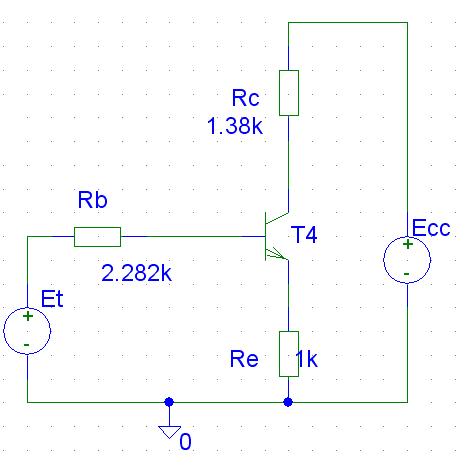jony130
Full Member level 3
Hi,
I got this little circuit (bjt in saturation)

And I can write down this:
Ie=Ib+Ic
Rb*Ib+Ube+Ie*Re=Et
Rc*Ic+Uce+Ie*Re=Ecc
Can anyone show me step by step how to calculate Ib
I got this little circuit (bjt in saturation)

And I can write down this:
Ie=Ib+Ic
Rb*Ib+Ube+Ie*Re=Et
Rc*Ic+Uce+Ie*Re=Ecc
Can anyone show me step by step how to calculate Ib